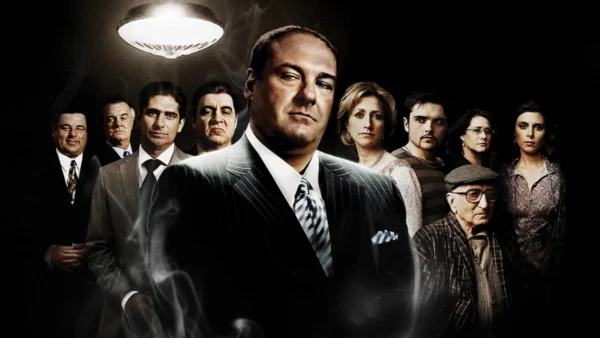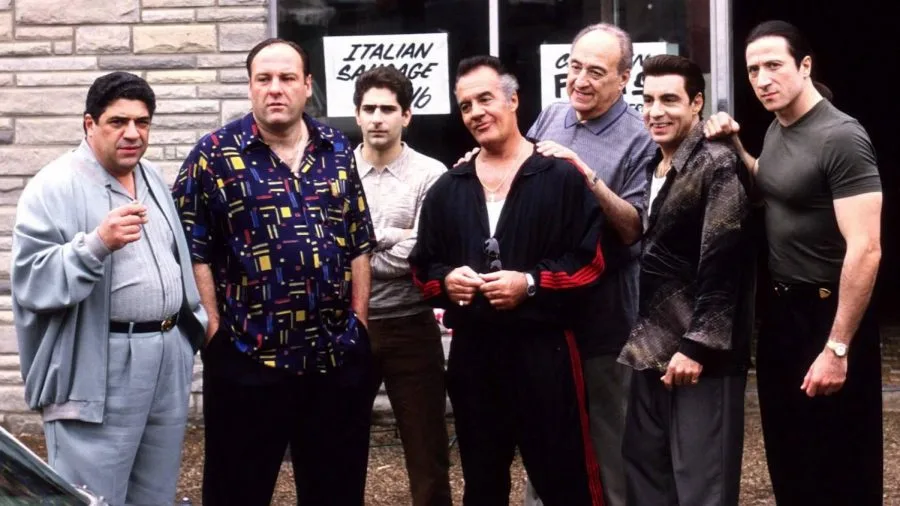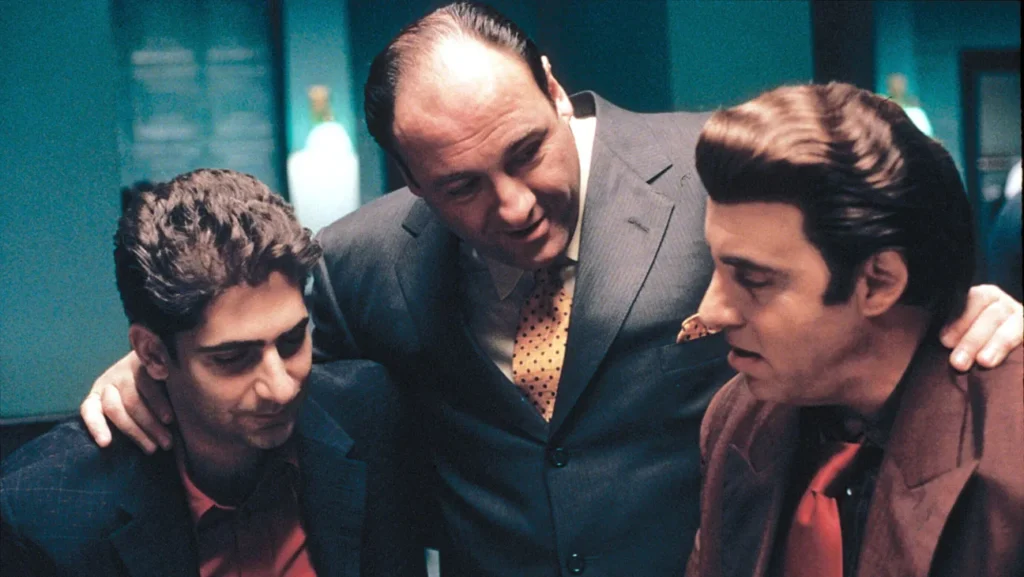There are TV finales, and then there’s The Sopranos finale. Very few of these closing scenes have been able to reside rent-free in the shared pop culture psyche as this one has. Long afterward, viewers are stuck in a frozen frame of that Holsten’s diner with “Don’t Stop Believin’” still in their heads and all of them wondering if Tony Soprano got through that plate of onion rings or got the chance.
David Chase didn’t so much conclude an innovative series as release a pop culture bomb. The Sopranos ending, that abrupt, unexpected cut to black, has spawned essays, Reddit threads, passionate barroom arguments and more than a few awkward Thanksgiving dinner fights. It’s the kind of television ending that divides families not necessarily along the lines of what happened on the television screen but along the lines of what didn’t.
And that’s the brilliance of it, Chase delivered an ending that’s deceptively ordinary yet impossibly layered. On the surface, it’s just Tony, Carmela and A.J. sharing a low-key family dinner, but underneath, it’s a slow burn masterclass in tension, built from the tiniest details: fleeting glances, the ding of door chime and strangers slipping in with unnerving, measured pauses.
If you’ve ever found yourself playing armchair detective over a plate of onion rings, rewinding the scene to study the timing of Meadow’s awkward parallel parking or scanning for any suspicious diner patrons, you’re in the right booth.
So, let’s slide into that Holsten’s vinyl seat together, top off our coffee and unpack exactly what we see, what might have happened after that infamous black screen and why the ending of The Sopranos still hits like a brick through a windshield.
What We Actually Watch

Here’s The Sopranos ending scene: Holsten’s, early evening. Tony’s in a booth. Carmela joins him. A.J. shows up. Meadow wrestles with parallel parking. Journey blares from the jukebox. Each time the door opens, the bell chimes. The camera keeps checking in on a few customers: a couple at the counter, a man in a Members Only jacket who eventually disappears into the men’s room. If you’ve seen The Godfather, that last bit feels like a flashing neon sign.
Meadow finally nails the parking. She hurries toward the diner. The bell rings. Tony glances up.
Smash to black. Silence. Credits. The most dissected ten seconds in television history.
Reading the Room: Why the Tension Works
The Sopranos finale plays like a heart monitor. Every bell chime bumps your pulse. Every glance at the door primes you for something bad. Tony’s world has always been a mix of casual background noise and lurking danger; the finale condenses that into one rhythm: family, food, and fear sharing a table.
There’s humor tucked in too. Meadow, future lawyer, can’t park. Tony treats onion rings like holy wafers. A.J. philosophizes. Life rolls on even as menace hides in a bathroom stall. That tonal balance, mundane yet murderous is The Sopranos in miniature.
Also, read Secrets We Keep Ending Explained: Piers, Privilege and a Pulse-Pounding Conscience
The Sopranos Ending Explained: Theories That Still Divide Fans

The Sopranos ending scene drills in a rhythm: swing of the door, ring of the bell, cut to Tony clocking who walked in. Again and again, it constructs a tiny metronome of distrust—someone comes in, we glance at Tony’s read, the universe keeps spinning. That’s traditional screen syntax; it prepares you to expect the next beat.
So when Meadow at last runs into Holsten’s and the bell rings again, your mind expects the familiar back-to-Tony’s-face resolution. But the image goes away. No reaction shot, no resolution, only blackout and silence. Over the years this ending of The Sopranos has gathered lots of interpretations. Let’s look at the two most famous ones.
Interpretation One: Tony Dies (Most Popular Theory)
That interruption of pattern is the point. When pulling away the anticipated cut, the show cuts completely into Tony’s perspective and then ends it immediately. The final sound we (but he) hear is the door bell. The picture never comes back because, if he’s dead, then there’s no picture to come back to. Even if we don’t take it as absolute death, the edit puts a weapon on the familiarity of the scene’s routine—the door/bell/face loop, to make us feel how tenuous that routine is. Another bell, and either lights go permanently dark or the terror rebounds for another day. Either way, the cut to black is the cleanest, coldest solution the show could provide.
Interpretation Two: Tony Lives (And That’s the Point)
Many fans don’t perceive that blackout as a hit, but business as usual for Tony: a life of living on the edge where any bell may be the final bell and any stranger may be trouble. In that read, the non-ending is the ending—his penalty is vigilance without reprieve. The clues fall into place: “Don’t Stop Believin’” winks at continuation, the show has never given us neat justice, and David Chase has hinted the finale has as much to do with us watching as with us seeing. The black screen turns into a mirror; if your mind puts a gunshot in it, the show silently inquires why you did need one.
What David Chase Has (and Hasn’t) Said

Chase has fueled both camps—dropping comments that hint at a “death scene” while insisting the ambiguity is intentional. The safest conclusion: the scene works both as a literal execution and a metaphor for Tony’s permanent state of vigilance. Either way, your stomach drops.
This is why The Sopranos finale still resonates: it’s a choose-your-poison ending where both options taste like Jersey.
Why the Cut Still Hurts
The finale’s form is the point: the cutting mimics Tony’s gaze, flicking between family comfort and possible threat, so the blackout reads less like a stunt than the show’s grammar boiled down. The moral math stays crooked—good folks bleed, bad ones skate—and the episode refuses to balance the books for us. It’s an American tragedy in a take-out bag: Holsten’s as chapel, onion rings as communion, Journey as the hymn, and that door chime as the ritual bell.
In the event of Tony’s death, the scene breaks down into pandemonium—Carmela and A.J. wail, Meadow stiffens as the true nature of what she’s seeing hits her, and the gunman melts into the crowd as if he was never there at all. The mob life does not take time to grieve; it plows onward, devouring anyone who gets in the way.
What Happens After the Black?

If Tony survives, the tension disappears virtually mercilessly quickly. Dessert is served. Someone makes a joke. Tony laughs at something inconsequential, the sort of moment which wouldn’t even register on most days. He goes home, sleeps, awakens the next morning—and still, every bell’s jingle or change in the room draws his focus. Survival, in short, isn’t tranquillity; it’s the prolongation of an existence experienced in continuous low-grade paranoia.
There’s no neat, tied-off ending of The Sopranos. Both possibilities feel true. Whether in life or death, the machine keeps running, and Tony remains caught inside it. Whether you’re squarely in the Tony Dies camp or are definite Tony Lives, the gut-punch hits the same. There’s the jolt—the breath you didn’t realize you were holding, the awkward silence settling in—and then the black screen looks back at you, forcing you to see your own face in the void.
It’s more than the end of the show; it’s the show propelling you into Tony’s booth, where terror and elation sit beside one another, the jukebox spins the hits of yesteryear, and each ding of the door is a looming threat.
Why The Sopranos Finale Changed TV
The Sopranos finale trusted silence. It used editing as a weapon. It made the audience complicit, scanning for threats, craving certainty and then denying them in a way that fit the show’s worldview. It didn’t jump the shark; it drained the tank.
Also, read The Eternaut Ending Explained: Snowfall, Mind Games and a Whole Lot of WTF
Final Word (and One Last Onion Ring)
You’re stuck with him, mid-chew on dinner, mid-thought on nothing and everything, mid-lyric as Journey continues on. Your gaze constantly darts to the door, scanning strangers, waiting for something to happen. Perhaps the next moment arrives with a gunshot. Perhaps it’s just the waitress with an order of onion rings. But the reality is, it doesn’t matter which one you believe happened because in Tony’s universe, tranquillity cannot exist, and the true finale is that the waiting never ceases.
Frequently Asked Questions (FAQs)
1. Did Tony die in the finale?
The prevailing read says yes: the sudden blackout is Tony’s point-of-view ending, echoing Bobby’s line, “You probably don’t even hear it when it happens.” Meadow enters, the bell rings, Tony looks up—cut to nothing. Still, Chase leaves it open enough that “life goes on” remains a viable take.
2. Why the hard cut to black instead of showing anything?
Form equals meaning. The show’s rhythm—door chime, Tony’s glance, door chime, Tony’s glance—trains you to expect his face. Instead, the screen goes dark. It’s either his final perception winking out or a trap that locks us in his permanent dread, where any bell could be the last.
3. What’s with the “Members Only” guy and Meadow’s parking struggle?
They’re tension engines. The jacketed stranger is a Godfather-style bathroom nod (grab the gun, do the hit), while Meadow’s botched parallel park delays her entrance to line up that fateful bell. Maybe they’re red herrings, maybe not—but they crank the paranoia to a boil.